Fire safety technologies see increased connectivity
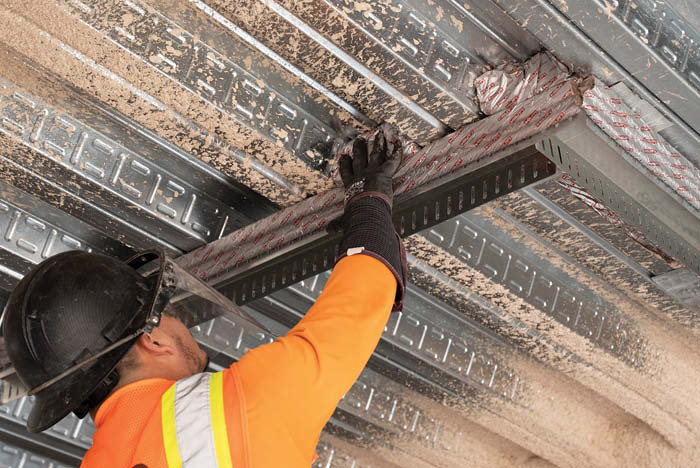
Factors driving the evolution of fire safety systems in hospitals include the Internet of Things (IoT), building automation and advances in mass notification systems.
Technology has advanced to support different forms of communication (e.g., text, email and mobile apps) that notify facilities managers of events or issues with alarm systems.
Other improvements enable remote connectivity to alarm systems to facilitate proactive maintenance and troubleshooting.
Health care challenges
Health care facilities pose many challenges to manufacturers of fire safety systems. Hospitals are large, complex facilities where minimizing occupant mobility and interruption of activity is important. Fire detection solutions must address these complex issues by employing effective detection, mitigation and communications technologies that meet the latest codes.
“With the number of operating challenges that health care facilities managers face on any given day, it’s unlikely they have time to continually think about fire and life safety compliance and documentation to satisfy accreditation agencies,” says Phil Mazzurco, fire safety solutions and service portfolio manager at Siemens Smart Infrastructure USA, Buffalo Grove, Ill. “It is important they select a fire safety vendor that can properly test and inspect their fire protection systems while providing accurate documentation.”
The COVID-19 pandemic has shown the importance of being prepared for unexpected emergencies. For example, many hospitals are facing challenges related to patient capacity, resulting in the rapid construction of alternate care sites or the repurposing of existing spaces. These spaces require effective fire detection systems to ensure code compliance and safety. The systems must be installed as quickly and efficiently as possible to avoid interrupting health care operations.
The continued growth of small, off-campus medical facilities is another key factor affecting vendors as they upgrade fire protection systems. The proliferation of these smaller facilities necessitates utilizing systems that are scalable, customizable and capable of granularity for alert activations and message delivery.
Understanding the variances in infrastructure at each location, large or small, is what dictates the product requirements and configuration, according to Tiffany Bates, sales and account executive for health care at Alertus Technologies LLC, Beltsville, Md. “Having an open platform that can integrate with existing technology, regardless of brand or system, is key to providing a comprehensive mass notification system that offers a single point of activation.”
Campus-style buildings require advanced networking designs that challenge fire safety practices in new ways. “In connecting multiple buildings, up-to-date fire alarm panels should utilize modular architectures that incorporate advances in network configuration, audio, survivability and, when connecting to external networks, adequate levels of cybersecurity — all while complying with the latest codes and standards,” says Jon Hughes, vice president of marketing and product strategy at Edwards Fire Safety, Bradenton, Fla.
Leaps and bounds
Improvements in technology have been coming in leaps and bounds the past few years. Code compliance in particular has seen improvements, with solutions such as Xaap streamlining inspection processes and providing 24/7 insight into fire system compliance and reporting, according to Julie Brown, institutional market leader at Johnson Controls, Milwaukee. “We also see advanced self-testing alarms taking off, which has helped hospitals during the COVID-19 pandemic. They reduce the time technicians spend in hospitals, lessening potential for exposure.”
Fire alarm control panels provide the capability to interface with other systems and head-end solutions such as building automation systems. “Detection devices are more advanced in their ability to detect an actual fire while ignoring false alarm sources. Also, detection technologies such as aspirating detection can be used in place of standard smoke detectors that may not be applicable in areas such as magnetic resonance imaging rooms,” says Mark Indgjer, product manager at Potter Electric Signal Co., St. Louis.
A key advance in fire panel protection is improved survivability, such as system design and installation that prevents loss of communication in one zone from spreading to other zones, Hughes says. “Also, the introduction of LED technology for notification appliances and lower power requirements can reduce deployment cost and the number of booster power supplies needed, freeing up wall space for other equipment.”
Other safety solutions
Manufacturers have introduced fire safety solutions that offer increased intelligence and interconnectivity to improve hospital safety. For example, Honeywell, Atlanta, has released the first tools from its new suite of Connected Life Safety Services (CLSS), an all-in-one cloud platform for fire safety systems. Built on the Forge platform, the tools enable fire technicians to minimize disruption, verify compliance and reduce time needed for design, installation, inspection, maintenance and reporting of life safety systems.
In addition, Honeywell has introduced self-testing smoke detectors that are UL-approved and, together with CLSS, allow a fire alarm technician to perform a smoke-entry and heat test using a Bluetooth-enabled smartphone. The test is activated from the phone and test results are presented in real time. “Once the inspector completes the visual test, he or she marks the device as passed and continues — with no disruption to patients or staff,” says Dick Bauer, vice president of sales for Notifier by Honeywell.
Johnson Controls has released the Smart Connected Fire Sprinkler Monitoring solution, which delivers real-time insights into fire sprinkler system health. It continuously monitors factors such as pressure and temperature, and sends notifications that alert facility managers of sprinkler conditions that could become an issue. “This means hospitals can avoid potentially dangerous situations such as frozen pipes or pressure imbalances, allowing them to maintain smooth operations, code compliance and overall safety,” Brown says.
Edwards Fire Safety offers the EST4 platform: a UL 864- and UL 2572-listed networked fire alarm and emergency communications panel that combines distributed messaging with in-building and wide-scale voice annunciation, enabling real-time system status and decision-making from anywhere via an intuitive user interface. “It is ideal for facilities that need to adapt to a wider range of panel-to-panel alarm network configurations than traditional Class A and B wiring but also want to scale for future growth,” Hughes says.
The right connection
Potter Electric Signal Co. has released IntelliView, a cloud-based platform that allows users to monitor Potter-connected devices from computers, tablets, smartphones and smartwatches. Fire systems send mobile push notifications for any off-normal signal, give access to all signals on all fire panels and display historical data. “With IntelliView, users can connect and monitor their Potter fire systems and IntelliGen nitrogen generators from anywhere through a mobile app or website,” Indgjer says.
Alertus Technologies LLC offers the Alertus fire panel interface, which takes event information from the fire panel, applies smart logic technologies and broadcasts messages over multiple communication paths. The system instantly responds upon activation of the fire alarm panel, recognizes the identity of the device initiating the fire alarm and translates commonly used fire panel abbreviations into an intelligible spoken message. Messages can include data about the nature and location of fire alarms and what action to take.
Although the fire panel interface must be compatible with existing fire alarm panels and public address systems, the integration requires little to no alteration of systems, according to Bates. “The cabinet-level interface allows the system to monitor the fire panel and activate alerts across the entire system, including desktop alerts, public address integration, strobes and sounders,” she says.
Siemens Smart Infrastructure USA recently released the UL 268 seventh edition compliant fire detector. “The revised UL 268 seventh edition standard now includes fire detection for polyurethane,” Mazzurco says. “This is a major development because many existing fire detection devices do not respond quickly enough to allow a safe escape time with these types of fires.”
Advances are being made in fire suppressing agents as well. Fike Corp., Blue Springs, Mo., has introduced the 3M Novec 1230 gaseous agent system, an environmentally sustainable solution that quickly extinguishes fires without damaging electronics or other valuable assets. With no residue left after a discharge, it minimizes downtime and protects people and assets.
“3M Novec 1230 fluid is a waterless fire suppressing agent that is discharged as a gas,” says Jason Jones, global product manager of fire suppression. “This provides non-damaging fire suppressing capabilities, making it ideal for extinguishing concealed fires in spaces where electronics or other mission-critical assets are stored, or where continuity of operations is crucial.” The system provides the added benefits of impulse valve technology: unimpeded agent flow out of the valve, longer pipe runs, smaller pipe diameter and greater design flexibility.
Passive protection
In the area of passive fire protection, health care facilities continue to choose maintenance-free, fire-rated cable pathway devices for the routing of low-voltage cables, according to Matt Thomas, chief marketing officer at STI Firestop, Somerville, N.J. “Compared to the traditional methods of fire-stopping cabling, these devices are better able to accommodate cabling moves, additions and changes as technology is upgraded without diminishing life safety code compliance or patient safety,” he says.
STI Firestop recently introduced the Clinician Patient Access Device (CPAD) in response to the COVID-19 pandemic. “As health care facility personnel began moving monitoring equipment and infusion pumps out of patient rooms and into corridors, they often would run wires, extension cords and IV tubing through the door undercut, which creates a trip hazard and a potential pinch point,” Thomas says.
To prevent this from happening, CPAD incorporates self-sealing membranes that allow these temporary services to be fed through the corridor wall and sealed. “This UL-certified device is fire-rated for corridor walls prescribed to be fire-rated per the NFPA 101®, Life Safety Code®,” Thomas says. “The device also restricts air flow, which is important when dealing with infected patients, and it reduces airborne sound transmission.”
Hilti North America, Plano, Texas, has introduced the Top Track Seal CFS-TTS MD preformed firestop solution, which is designed for metal deck construction. It provides a firestop smoke and sound seal for head-of-wall joints between top track and gypsum to corrugated metal deck slabs and metal roof decks.
Designed as a flexible solution for various track sizes in metal deck construction, it eliminates the need to stuff and spray head-of-wall joints. “Simply saddle your track with Top Track Seal, attach it and fill the flutes with our preformed plugs or covers,” says Joshua Close, marketing product manager for Hilti’s preformed joint solutions.
More connectivity
Looking ahead, experts predict even more connectivity as fire protection systems continue to evolve.
“IoT will continue to play a critical role in helping hospital management and first responders develop an even more precise response to fire events through data gathered across multiple sensors within fire and life safety systems,” says Bauer of Honeywell. “This connectivity will improve predictive analysis and maintenance as it will leverage existing data to discern the potential cause of a fire event and the appropriate response based on past insights.”
Neal Lorenzi is a freelance writer and regular contributor based in Mundelein, Ill.
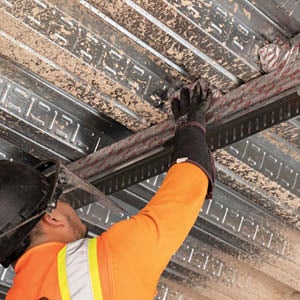
BUILT FOR SAFETY
Top Track Seal is a preformed firestop solution designed for metal deck construction. Hilti North America

SAFE SEPARATION
The Clinician Patient Access Device allows the passing of temporary patient services through corridor walls, providing safe monitoring for clinical staff while still maintaining fire, smoke and acoustical seals. STI Firestop
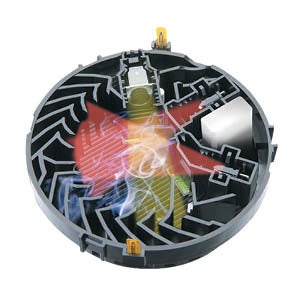
FAST RESPONSE
UL 268 seventh edition-compliant fire detectors are more sensitive to fires involving polyurethane materials that can burn quickly. Siemens Smart Infrastructure USA
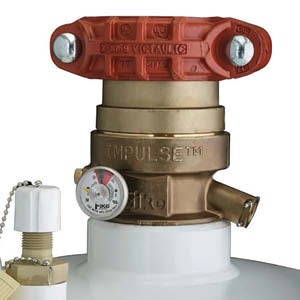
QUICK ACTION
3M Novec 1230 fluid quickly extinguishes fires without damaging electronics or other valuable assets. Fike Corp.

NOW HEAR THIS
In the event of a fire, this system’s pull activates the fire alarms and triggers evacuation instructions to computer desktops, VoIP phones and intelligible text-to-speech announcements over the public address system. Alertus Technologies LLC
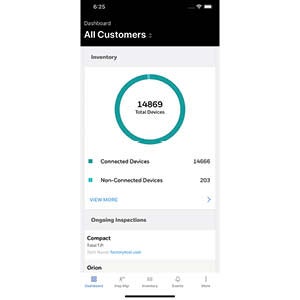
IT’S ALL HERE
Connected Life Safety Services is an all-in-one cloud platform for fire safety systems. Honeywell
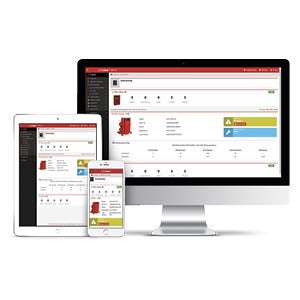
KEEPING TRACK
With IntelliView, users can connect and monitor their Potter fire systems via a mobile app or website. Potter Electric Signal Co.
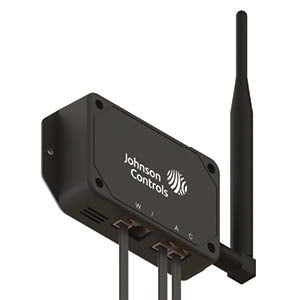
STAYING CONNECTED
The Smart Connected Fire Sprinkler Monitoring solution delivers real-time insights into fire sprinkler system health. Johnson Controls
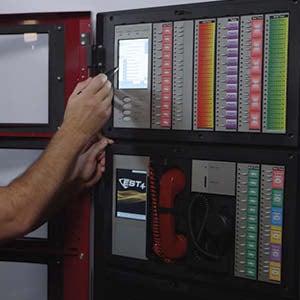
USER FRIENDLY
The EST4 platform enables real-time system status and decision-making from anywhere via a highly intuitive user interface. Edwards Fire Safety




